Hurricane Melissa made landfall over eastern Cuba near the city of Chivirico early Wednesday as an "extremely dangerous" Category 3 storm, the Miami-based National Hurricane Center said, after pummeling Jamaica as one of the strongest Atlantic hurricanes on record.
Melissa weakened somewhat while over Cuba, dropping to a Category 2 storm by 8 a.m. EDT, but it continued to hit eastern parts of the island with "damaging winds, flooding rains, and dangerous storm surge," the center said. Forecasters expected the hurricane to bring the same impacts to the Bahamas, which it was expected to strike later on Wednesday.
Some 735,000 people were evacuated ahead of the storm, Cuban President Miguel Díaz-Canel Bermúdez said Tuesday night.
A hurricane warning was in effect for the provinces of Granma, Santiago de Cuba, Guantánamo, Holguin and Las Tunas as well as the southeastern and central Bahamas.
Melissa had top sustained winds of 120 mph when it got to Cuba but they were down to 105 mph when the NHC issued its 8 a.m. EDT advisory. A hurricane is no longer considered "major" when it's a Category 2 on the Saffir-Simpson Hurricane Wind Scale, with wind speeds between 96 and 110 mph.
The storm was speeding up a bit, moving north-northeast at 14 mph, according to the hurricane center. Its core was about 45 miles northwest of Guantanamo, Cuba, and 205 miles south of the central Bahamas.
In the Cuban city of Las Tunas, 73-year-old retiree Manuel Pérez told The Associated Press by phone that it was impossible to quantify the damage just yet because the hurricane hit at night. No one was on the streets."
"The winds and gusts were very strong, and the rain is still coming," he said.
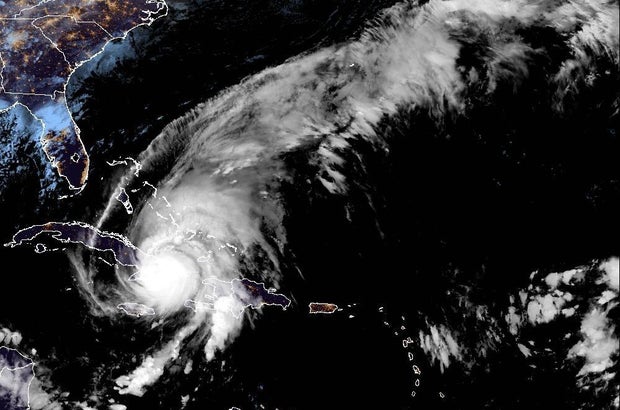 A satellite eye's view shows Hurricane Melissa blanketing eastern Cuba at 5:20 a.m. EDT on Oct. 29, 2025.
NOAA / National Hurricane Center
A satellite eye's view shows Hurricane Melissa blanketing eastern Cuba at 5:20 a.m. EDT on Oct. 29, 2025.
NOAA / National Hurricane Center
The hurricane center warned residents of Cuba to remain sheltered and that preparations for the storm in the Bahamas "should be rushed to completion."
Melissa was forecast to weaken as it crosses Cuba through the morning but remain a powerful hurricane as it moves across the southeastern or central Bahamas later Wednesday. The storm is then expected to make its way late Thursday near or to the west of Bermuda, where a hurricane watch is in effect. The NHC said Melissa is likely to still be a strong hurricane at that point.
The continuing intense rain could cause life-threatening flooding with landslides, U.S. forecasters said. The storm was expected to generate a storm surge of up to 12 feet in the region and drop up to 20 inches of rain on parts of eastern Cuba.
"Numerous landslides are likely in those areas," said NHC director Michael Brennan.
The hurricane could worsen Cuba's severe economic crisis, which already has led to prolonged power blackouts, fuel shortages and food shortages.
"There will be a lot of work to do. We know there will be a lot of damage," Díaz-Canel said in a televised address in which he assured that "no one is left behind and no resources are spared to protect the lives of the population."
At the same time, he urged the population not to underestimate the power of Melissa, "the strongest ever to hit national territory."
Provinces from Guantánamo — in the far east — to Camagüey, almost in the center of elongated Cuba, had already suspended classes on Monday.
Jamaica grapples with damage Melissa left behind
Melissa struck Jamaica Tuesday with top sustained winds of 185 mph.
Jamaican officials reported complications in assessing the full damage, while the National Hurricane Center said the local government had lifted the tropical storm warning there.
"There's a total communication blackout on that side," Richard Thompson, acting director general of Jamaica's Office of Disaster Preparedness and Emergency Management, told the Nationwide News Network.
Extensive damage was already reported in parts of Clarendon in southern Jamaica and in the southwestern parish of St. Elizabeth, which was "under water," said Desmond McKenzie, deputy chairman of Jamaica's Disaster Risk Management Council.
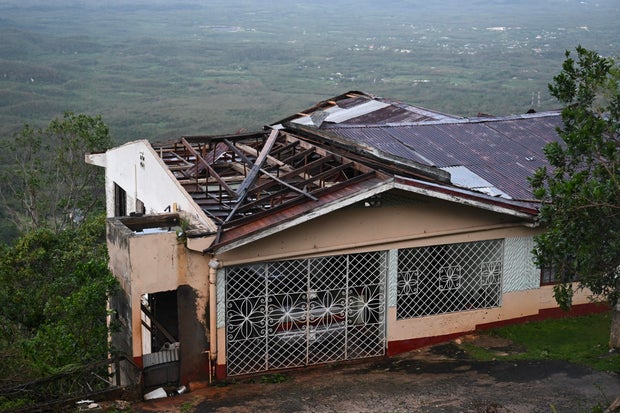 A house with a damaged roof is seen after the passage of Hurricane Melissa in Manchester, Jamaica, on Oct. 28, 2025.
RICARDO MAKYN/AFP via Getty Images
A house with a damaged roof is seen after the passage of Hurricane Melissa in Manchester, Jamaica, on Oct. 28, 2025.
RICARDO MAKYN/AFP via Getty Images
The storm also damaged four hospitals and left one without power, forcing officials to evacuate 75 patients, McKenzie said.
More than half a million customers were without power as of late Tuesday as officials reported that most of the island experienced downed trees, power lines and extensive flooding.
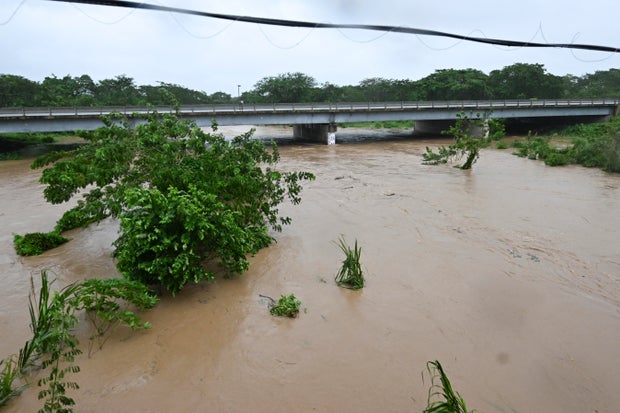 The Rio Cobre comes out of its banks near St. Catherine, Jamaica, as Hurricane Melissa battered the island on Oct. 28, 2025.
RICARDO MAKYN/AFP via Getty Images
The Rio Cobre comes out of its banks near St. Catherine, Jamaica, as Hurricane Melissa battered the island on Oct. 28, 2025.
RICARDO MAKYN/AFP via Getty Images
The government said it hopes to reopen all of Jamaica's airports as early as Thursday to ensure the quick distribution of emergency relief supplies.
The U.S. government said it was deploying a disaster response team and search and rescue personnel to the region. And the State Department said non-emergency personnel and family members of U.S. government employees were authorized to leave Jamaica because of the storm's impact.
The storm already was blamed for seven deaths in the Caribbean, including three in Jamaica, three in Haiti and one in the Dominican Republic, where another person remains missing.


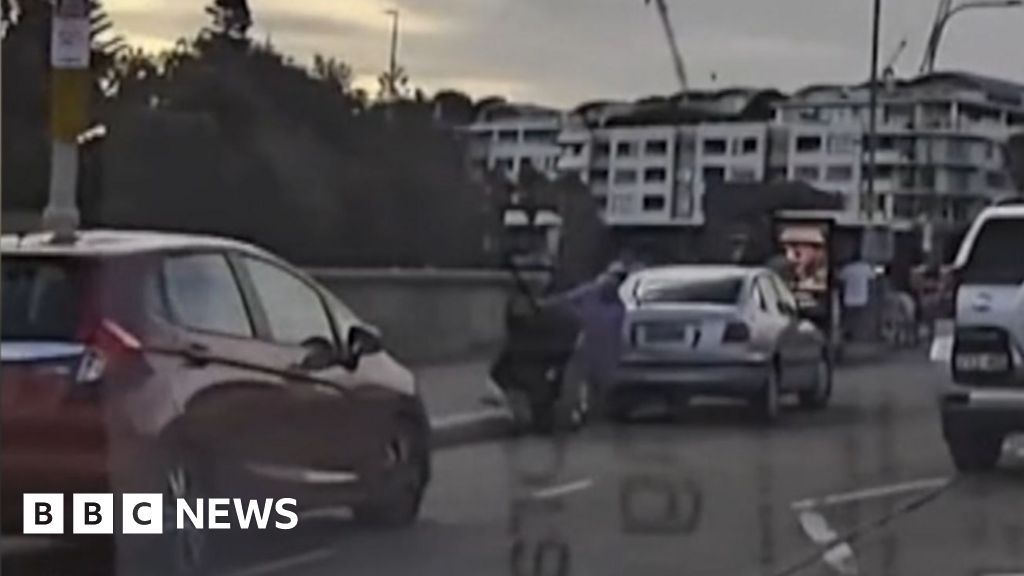




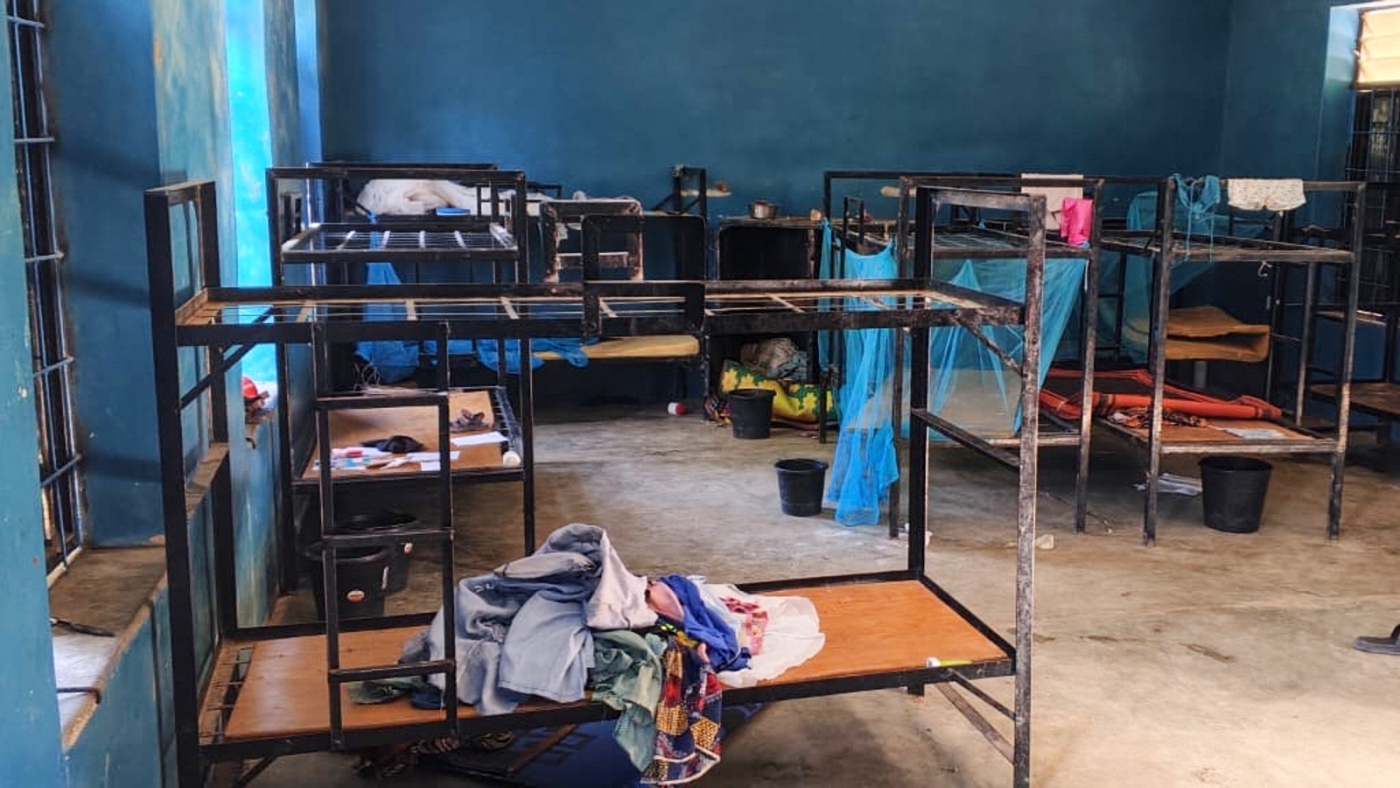



 English (US) ·
English (US) ·